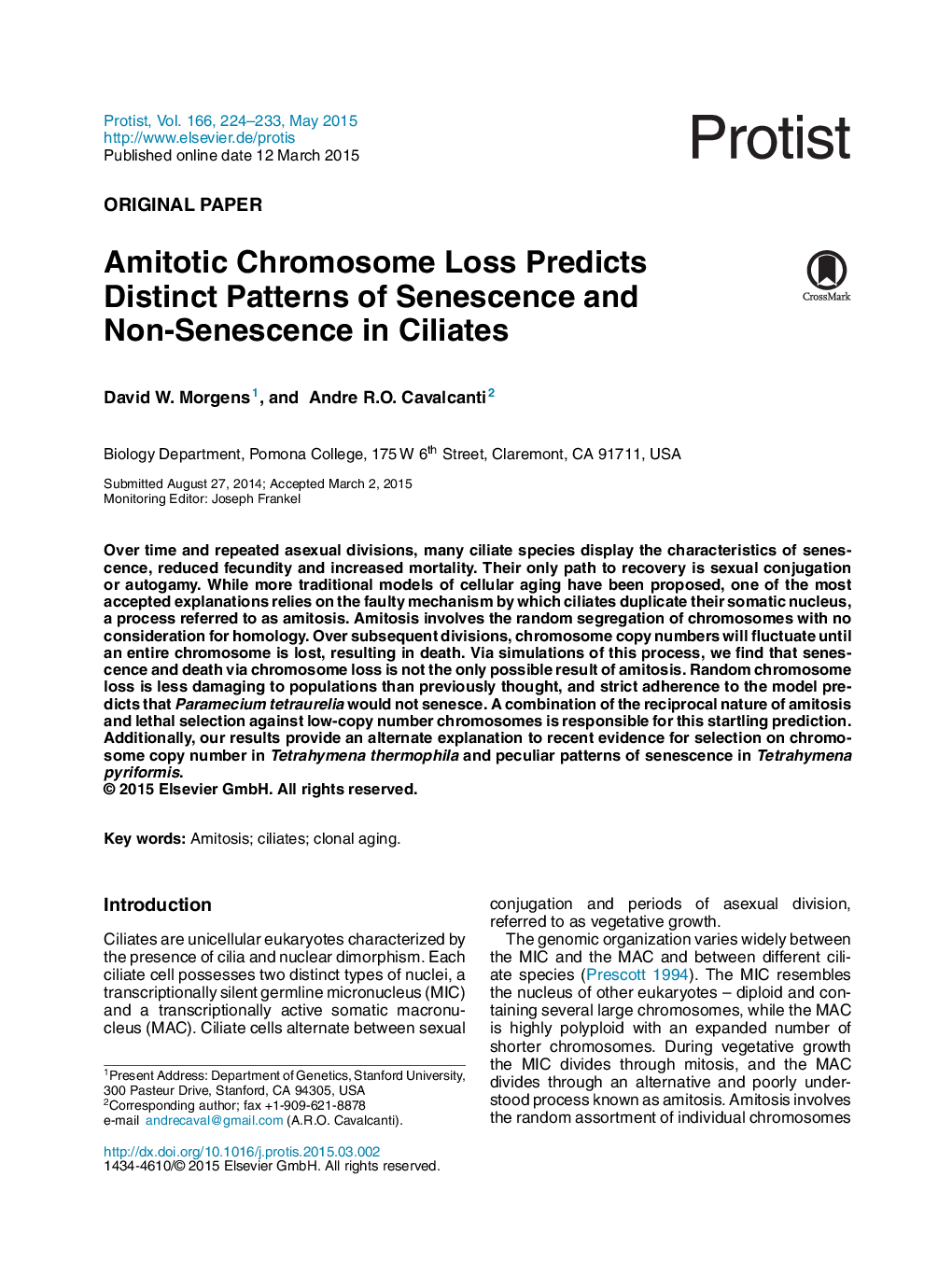| کد مقاله | کد نشریه | سال انتشار | مقاله انگلیسی | نسخه تمام متن |
|---|---|---|---|---|
| 2061781 | 1076527 | 2015 | 10 صفحه PDF | دانلود رایگان |
Over time and repeated asexual divisions, many ciliate species display the characteristics of senescence, reduced fecundity and increased mortality. Their only path to recovery is sexual conjugation or autogamy. While more traditional models of cellular aging have been proposed, one of the most accepted explanations relies on the faulty mechanism by which ciliates duplicate their somatic nucleus, a process referred to as amitosis. Amitosis involves the random segregation of chromosomes with no consideration for homology. Over subsequent divisions, chromosome copy numbers will fluctuate until an entire chromosome is lost, resulting in death. Via simulations of this process, we find that senescence and death via chromosome loss is not the only possible result of amitosis. Random chromosome loss is less damaging to populations than previously thought, and strict adherence to the model predicts that Paramecium tetraurelia would not senesce. A combination of the reciprocal nature of amitosis and lethal selection against low-copy number chromosomes is responsible for this startling prediction. Additionally, our results provide an alternate explanation to recent evidence for selection on chromosome copy number in Tetrahymena thermophila and peculiar patterns of senescence in Tetrahymena pyriformis.
Journal: Protist - Volume 166, Issue 2, May 2015, Pages 224–233
